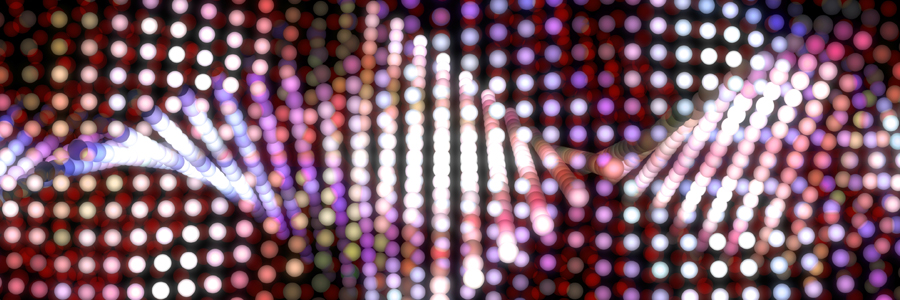
LED Colour rendering and colour temperature.
Depending on how well a light source reveals colours is denoted by the Colour Rendering Index. Until recently, the comparison was based on eight standard colours known as R8, which are not suitable for LEDs due to their spectra, the preferred measure for the LED is Ra14, which is provides a better indication of the LEDs ability to reproduce colour.. The additional six ‘special’ colours include red, yellow, blue and green.
To produce a white light the use of a blue chip with a yellow phosphor coating is normally used, both cool and warm white can be achieved by varying the composition of the phosphor used. Whether the light looks cool or warm is known as the colour temperature or colour appearance – which is generally abbreviated to CCT. Generally this will be referenced as degrees Kelvin (K) in sales literature.
To achieve a warm/ambient environment LEDs of 2700K or 3000K are recommended – typical applications for these would be homes, spas or restaurants. Cool LEDs are generally used by fast food restaurants and buildings with lots of steel and glass as indoors these work better at high levels of illumination – at low levels they appear dull and grey. For outdoor use cool LEDs should also be used.
Deep saturated colours can be produced by LED’s and with the simple addition of a control panel to RGB LEDs a whole spectrum of colours and sequences can be achieved.
Colour changing and colour mixing can be created by signals being sent to the driver (which is often placed inside the fitting) or more sophisticated systems use software where scenes are configured on a Mac or PC and then uploaded to a wall plate.
The best colour change luminaires use 4 colours – either RGBW (white) or RGBA (amber)
The below outlines what affect certain LEDs will create and which application is most suitable:
- Warm White 2700K – Produces a warm and cosy, soft affect and is often used in homes, hotels, receptions and restaurants.
- White 3000K – Produces a warm and personal affect and is best used in retail stores and libraries.
- Neutral 3500K – Produces an inviting mood and is ideal for showrooms or offices
- Cool White 4000K – Produces a clean, efficient and neat light which is recommended for offices, hospitals, classrooms, lecture theatres etc
- Daylight 5000K – 6500K – A bright, alert affect is created and are best used in medical exam rooms, shopping centre and jewellery stores.
